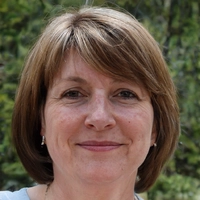
Pick the right cup at the right time, and a simple herb can actually help. Choose the wrong moment, and it feels like nothing happens. That’s the story with red clover tea. The big question isn’t just “does it work?”-it’s “when should I drink it for my goal?” Here’s a clear, realistic guide to timing, dose, and safety so you can use it with confidence, not guesswork.
TL;DR / Key takeaways
- For hot flashes: 2-3 cups/day, spaced morning and evening. Expect 8-12 weeks for steady changes.
- For sleep: 1 cup 60-90 minutes before bed; finish other cups 2-3 hours before sleep to avoid bathroom trips.
- For digestion or post-meal comfort: 1 cup after meals. For allergies/colds: small cups spread through the day.
- Drink with food if you get nausea; separate from thyroid meds, iron, and tamoxifen by at least 3 hours.
- Avoid if pregnant, breastfeeding, on blood thinners, or with hormone-sensitive cancers. Evidence for benefits is modest and mixed.
The best time to drink red clover tea (by goal)
Start with the job you want the tea to do. Red clover (Trifolium pratense) is known for its isoflavones-plant compounds that act a little like estrogen in the body. That’s why it shows up in menopause chats. Timing matters because your symptoms ebb and flow over the day.
Hot flashes and night sweats
- Best timing: 1 cup in the morning and 1 cup in the evening. If you get a late‑afternoon spike, add a third cup around 3-4 pm.
- Why this works: Steady intake keeps isoflavones hovering at a level that some women find eases the intensity and frequency of flashes.
- Expectations: You might notice small changes in 2-4 weeks, but most trials that show benefit ran 8-12 weeks. Keep notes. If nothing shifts by week 12, reconsider.
Sleep and calm
- Best timing: 1 cup 60-90 minutes before bed. If you wake to urinate, test your last cup earlier (2-3 hours before sleep) for a few nights.
- Why this works: It’s caffeine‑free and can be soothing. But red clover can be mildly diuretic for some people, so timing your last cup matters.
Digestion or after-meal comfort
- Best timing: After meals, especially lunch and dinner.
- Why this works: Warm herbal infusions can settle the stomach, and taking it with food can reduce the chance of nausea in sensitive folks.
Skin support or general hormone balance
- Best timing: Same time each day for consistency-e.g., morning and early evening. Herbs work better as routines than as one‑offs.
- Why this works: You’re aiming for steady intake, not spikes.
Allergies/cold season
- Best timing: Smaller cups spread across the day (morning, mid‑afternoon). Keep your evening serving earlier if you’re prone to nighttime bathroom trips.
With or without food?
- If you feel fine: Any time works.
- If you get queasy: Take with food or immediately after meals.
Timing around medications and supplements
- Separate by at least 3 hours from thyroid hormone (levothyroxine), tamoxifen, and iron supplements to avoid absorption or mechanism clashes.
- On warfarin or other blood thinners? Skip red clover and talk to your doctor. Red clover contains compounds (including coumarins and isoflavones) that can affect clotting.
| Goal | Best time | Typical amount | Why this timing | Watch‑outs |
|---|---|---|---|---|
| Hot flashes | Morning + evening; optional mid‑afternoon | 2-3 cups/day | Steady intake supports consistent isoflavone exposure | Give it 8-12 weeks; track frequency/intensity |
| Night sweats / sleep | 60-90 min before bed | 1 cup | Bedtime ritual and gentle relaxation | Move earlier if you wake to urinate |
| Digestion | After meals | 1 cup after lunch or dinner | Warm fluids often sit better with food | Skip if you feel bloated afterward |
| Skin / general balance | Same times daily | 1-2 cups/day | Consistency beats sporadic dosing | Reassess at 8-12 weeks |
| Allergies/colds | Morning and mid‑afternoon | 2 small cups/day | Spread intake through day | Hydrate with water too |
| While on sensitive meds | 3+ hours away from meds | - | Minimize absorption interactions | Ask your pharmacist/GP first |
How to brew, dose, and plan your week
Brewing basics (tastes better when you don’t boil it to death)
- Measure: 1-2 teaspoons (about 2-4 g) dried red clover blossoms per 250 ml cup. For a stronger brew, go to 3 teaspoons (6 g); start low if you’re sensitive.
- Heat: Bring fresh water just off the boil (around 90-95°C).
- Steep: Pour over the blossoms, cover, and steep 10-15 minutes. Covering keeps the good stuff from evaporating.
- Strain and sip: Warm is best; cool leftovers keep in the fridge for 24 hours.
Daily dose (for tea)
- Common range: 1-3 cups/day. Most people aiming at hot flashes land on 2 cups.
- New to it? Start with 1 cup/day for a week, then increase if you tolerate it well.
Cycling and duration
- Short trials: 8-12 weeks is a fair test window for menopausal symptoms.
- Breaks: If you want to continue beyond 12 weeks, consider a 1-2 week break every couple of months and reassess your baseline symptoms.
How to blend (or not)
- Gentle pairings: Lemon balm or spearmint can make it tastier without crowding the effect.
- Avoid stacking estrogen‑like herbs (e.g., hops) if you’re sensitive or on hormone‑related meds unless your clinician okays it.
- Skip licorice root if you have high blood pressure or fluid retention.
Quality matters
- Choose reputable brands with the botanical name Trifolium pratense on the label.
- Colour and aroma: Good blossoms are pink‑purple and slightly sweet‑grassy, not brown and dusty.
- Storage: Keep in an airtight container away from heat, light, and humidity.
Simple weekly plan (tweak to your day)
- Mon-Sun: 1 cup with breakfast, 1 cup at 7-8 pm. If you get late‑afternoon flashes, add a cup at 3-4 pm.
- Bedtime cup trial: If you want a sleep ritual, try a bedtime cup for two nights and note any extra bathroom trips; if it’s annoying, shift it earlier.
- On gym days: Keep your pre‑workout water separate. Drink your tea after meals, not right before heavy exercise.
Tracking what matters
- Log three things for 2-4 weeks: flash frequency, flash intensity (0-10), and sleep quality (hours + wake‑ups).
- Note timing: When you drank the tea and when symptoms hit. Adjust your tea timing toward your symptom peaks.

Safety, side effects, and who should avoid it
Herbs are not inherently “gentle” just because they’re plants. Red clover brings benefits for some, but it also brings caveats. Here’s the short, honest list.
Who should skip red clover
- Pregnant or breastfeeding: Avoid. Safety hasn’t been established, and the estrogen‑like activity is a concern.
- On blood thinners (e.g., warfarin), with bleeding disorders, or scheduled for surgery: Avoid. Red clover contains coumarin‑type compounds and may affect clotting; stop at least 2 weeks before surgery.
- Hormone‑sensitive cancers (breast, uterine, ovarian), endometriosis, or uterine fibroids: Avoid unless your specialist approves; its isoflavones may act on estrogen pathways.
- On tamoxifen or aromatase inhibitors: Avoid unless your oncology team clears it.
- Using combined oral contraceptives or HRT: Talk to your prescriber. Red clover is unlikely to replace or meaningfully boost hormones, but mixing phytoestrogens with prescribed hormones deserves a case‑by‑case check.
Common side effects
- Upset stomach, nausea, or loose stools (often dose‑related; try with food).
- Headache or dizziness (usually transient; stop if persistent).
- Skin rash or itching (rare-discontinue if this happens).
- Spotting or menstrual changes in some people (stop and seek advice if you notice this).
Medication timing and interactions
- Separate your tea by at least 3 hours from levothyroxine, iron, tamoxifen, and other narrow‑therapeutic‑index meds.
- Warfarin and antiplatelets: Don’t combine without medical supervision.
What the evidence actually says
- Menopausal symptoms: A 2021 meta‑analysis in the journal Menopause reported a modest reduction in daily hot flush frequency with red clover isoflavones (typically 40-80 mg/day), but not all trials agreed and effect sizes were small.
- Bone health: Some small randomized trials show improvements in bone turnover markers over 6-12 months; changes in bone density are inconsistent.
- Cholesterol: Mixed and generally small effects on LDL/HDL; not a replacement for diet or statins.
- Regulatory perspective: The U.S. National Center for Complementary and Integrative Health (NCCIH) notes mixed evidence for menopause; Memorial Sloan Kettering’s About Herbs monograph flags the clotting and hormone cautions; Australia’s TGA permits red clover in listed medicines with restrictions on claims and safety statements. These are good touchstones for risk/benefit thinking.
Bottom line on safety: If you have a complex medical history or take daily meds, a quick check with your GP or pharmacist is smart. Bring your exact product and how much you plan to drink.
Quick tools: timing table, checklists, examples, and mini‑FAQ
Five‑minute timing rule‑of‑thumb
- Hot flashes: Morning + evening. Add a mid‑afternoon cup if needed.
- Sleep: One cup 60-90 min before bed. If you wake up to pee, move it earlier.
- Digestion: After meals.
- On meds: Keep a 3‑hour buffer.
Personalized examples
- Perimenopause, daytime flashes: Breakfast cup at 7:30 am, second cup at 3:30 pm, skip evening if nights are fine. Reassess in 3 weeks.
- Night sweats with poor sleep: Cup at 8:00 pm, last fluids by 9:00 pm, bed at 10:00 pm. If you wake, move the cup to 7:00 pm for a week.
- Busy workdays with meetings: Brew a 500 ml thermos at 8:00 am (2 teaspoons blossoms). Sip a cup at 10:00 am, finish the rest at 3:00 pm.
Checklist before you start
- Goal picked? (hot flashes, sleep, digestion, skin)
- Any red flags? (pregnancy, blood thinners, hormone‑sensitive conditions)
- Timing chosen? (morning/evening or after meals)
- Medication buffer set? (3 hours)
- Trial window booked? (8-12 weeks for menopausal symptoms)
- Simple symptom log ready? (frequency, intensity, sleep)
Troubleshooting
- No change after 4 weeks: Confirm you’re at 2 cups/day and keeping times steady. If still flat by 12 weeks, it may not be your herb-consider alternatives like sage tea or black cohosh (with the same safety check), or talk to your GP about non‑herbal options.
- Night waking from urination: Move your last cup to at least 3 hours before bed, and front‑load your water earlier in the day.
- Stomach upset: Cut the strength by half, pair with food, or try shorter steeps (8-10 minutes).
- New spotting or breast tenderness: Stop and check with your clinician.
- On warfarin and thinking “just one cup”: Don’t. The risk isn’t worth the experiment.
Mini‑FAQ
- Can I drink it on an empty stomach? Yes, if it feels fine. If you get queasy, take it with food.
- Is it safe every day? For many healthy adults, short‑term daily use is fine. Build in reassessments every couple of months.
- Tea vs capsules-does timing change? Capsules with standardized isoflavones are usually taken with meals once or twice a day. Tea timing follows the same logic: morning/evening for hot flashes, earlier if it disturbs sleep.
- Can I take it with magnesium or calcium at night? Usually yes, but space it if your supplement upsets your stomach or if you take thyroid meds (keep that 3‑hour gap).
- Does it replace HRT? No. Some people feel modest relief, but it’s not a stand‑in for prescribed hormone therapy.
If you’re in Australia: Many red clover products are sold as foods (teas) or as listed medicines regulated by the TGA. Claims on the box are restricted, which is why labels stay conservative. For personal advice, your GP or a registered pharmacist can check interactions with your current meds on the spot.
Realistic next steps
- Pick your goal and choose a simple 2‑cup schedule for two weeks.
- Log symptoms twice a day. If you see a pattern, nudge the timing toward your symptom peaks.
- At 4 weeks: decide whether to continue, adjust, or switch. If you’re not improving by 8-12 weeks, change strategy.
- If you have medical conditions or take daily meds, get a quick thumbs‑up from your clinician before you start.
You don’t need to micromanage every sip. Set a routine, give it a fair run, and keep your health team in the loop if you’ve got risk factors. Small, steady habits make herbs useful; timing just helps them show up when you need them.

